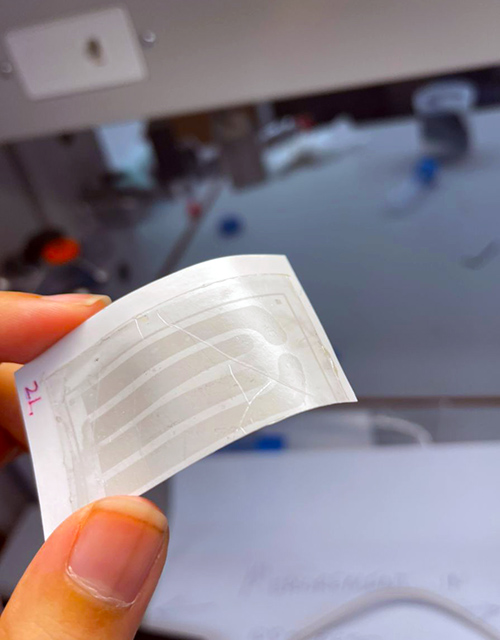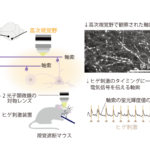2023-04-17 ノースウェスタン大学
ラットモデルにおいて、グラフェンタトゥーは不整脈を感知し、心臓の自然な動きを拘束したり変化させることなく電気刺激を与えることに成功しました。この研究は、Advanced Materials誌に掲載されました。
<関連情報>
- https://news.northwestern.edu/stories/2023/04/graphene-tattoo-treats-cardiac-arrhythmia-with-light/
- https://onlinelibrary.wiley.com/doi/10.1002/adma.202212190
グラフェンバイオインタフェースによる心筋梗塞の診断と治療 Graphene Biointerface for Cardiac Arrhythmia Diagnosis and Treatment
Zexu Lin, Dmitry Kireev, Ning Liu, Shubham Gupta, Jessica LaPiano, Sofian N. Obaid, Zhiyuan Chen, Deji Akinwande, Igor R. Efimov
Advanced Materials Published: 25 March 2023
DOI:https://doi.org/10.1002/adma.202212190

The graphene heart implant on tattoo paper.
Abstract
Heart rhythm disorders, known as arrhythmias, cause significant morbidity and are one of the leading causes of mortality. Cardiac arrhythmias are frequently treated by implantable devices, such as pacemakers and defibrillators, or by ablation therapy guided by electroanatomical mapping. Both implantable and ablation therapies require sophisticated biointerfaces for electrophysiological measurements of electrograms and delivery of therapeutic stimulation or ablation energy. In this work, a graphene biointerface for in vivo cardiac electrophysiology is reported for the first time. Leveraging sub-micrometer-thick tissue-conformable graphene arrays, sensing and stimulation of the open mammalian heart are demonstrated both in vitro and in vivo. Furthermore, the graphene biointerface treatment of atrioventricular block (the kind of arrhythmia where the electrical conduction from the atria to the ventricles is interrupted) is demonstrated. The graphene arrays show effective electrochemical properties, namely interface impedance down to 40 Ω cm2 at 1 kHz, charge storage capacity up to 63.7 mC cm-2, and charge injection capacity up to 704 µC cm-2. Transparency of the graphene structures allows for simultaneous optical mapping of cardiac action potentials, calcium transients, and optogenetic stimulation while performing electrical measurements and stimulation. The report presents evidence of the significant potential of graphene biointerfaces for advanced cardiac electrophysiology and arrhythmia therapy.



